Pentium 4 3.46 Extreme Edition and 925XE: 1066MHz FSB Support is Here
by Anand Lal Shimpi on October 31, 2004 3:00 PM EST- Posted in
- CPUs
Intel D925XECV2: Enthusiast Options
The new Intel 925XE includes adjustments for memory timings, memory speeds, memory voltage, and CPU FSB adjustments. These options are well-hidden in the Intel BIOS, but they are much more complete than you might expect on an Intel board.

The Main menu provides system information, but there is little indication of what is lurking inside the Intel BIOS. The real action for the Enthusiast is in the Advanced menu.

In the Advanced menu are the options to adjust PCI, Boot, Peripheral, Drive, Floppy, Video, USB, etc. The main controls for the Enthusiast are found in the Chipset Configuration menu
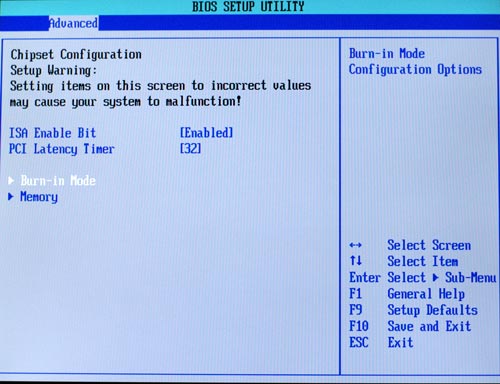
Chipset Configuration includes two important sub-menus - Burn-In Mode and memory
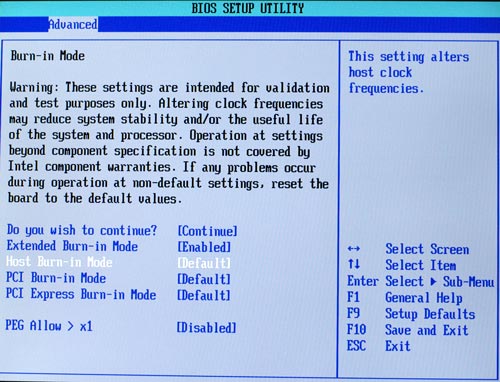
Continue and Extended Burn-In Mode should be enabled. You can then select Host Burn-In Mode.

Host Burn-In Mode now reveals an adjustment range of -2% to 10% in 1% increments. With a base frequency of 266 or 1066FSB, this is an adjustment range of 1045 FSB to 1173 FSB in 10.66MHz increments. While this is a very limited range compared to the average Enthusiast board, it is certainly a beginning for Enthusiast controls on an Intel board.

PCI speed can be adjusted form the default 33.33 to 36.36 and 40.0.
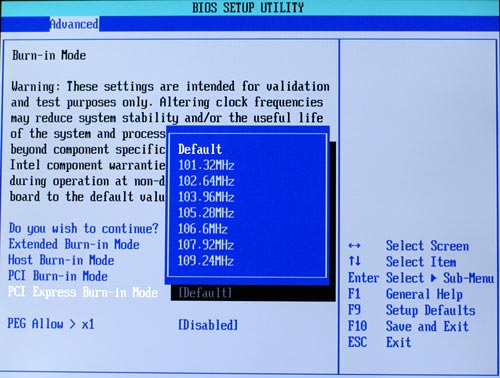
PCI Express also has an adjustment range from the default 100 to around 110 in 1.32Mhz increments.
Returning to Chipset Configuration, the Memory sub-menu has a wide range of memory adjustments.
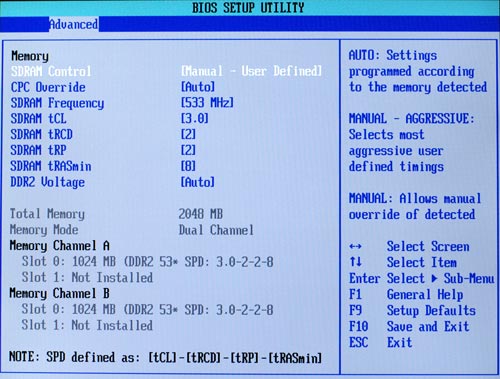
After selecting Manual-User Defined you can select memory timings. This includes CAS Latency (tCL), RAS-to-CAS Delay, tRP., and tRAS.
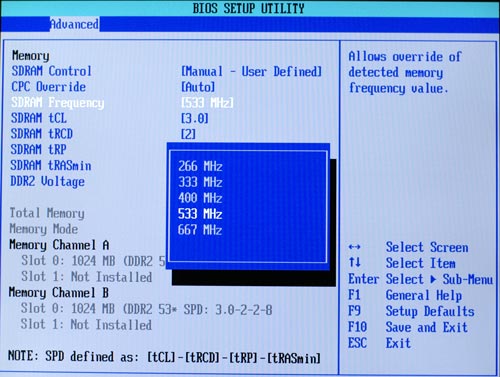
DDR2 Memory Speed can be adjusted to base frequencies of 266, 333, 400, 533, and 667.
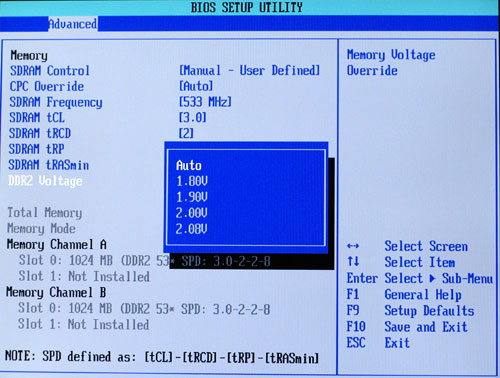
It was particularly surprising to find a reasonable range of memory voltage adjustments in the Intel BIOS. The available range is from default 1.8V to 2.1V. this is wide enough to allow many DDR533 rated DDR2 dimms to run at DDR667 or faster.
There are just two major controls missing for the Enthusiast. There is no option in the BIOS that we could find to adjust the base CPU frequency. If this could be forced to lower standard speeds such as 200 (800), there would be much more flexibility available for controlling the CPU. There is also no provision for CPU voltage, which is becoming less important as processor operating voltages have decreased. Our test CPU did have limited multiplier adjustments of 12X-13X but we do not know if shipping 1066 processors will also have this feature.
We could wish for wider ranges on several options, but the good news is this Intel board does contain the kind of tweaking controls Enthusiasts have been asking for from Intel.










63 Comments
View All Comments
Gnoad - Sunday, October 31, 2004 - link
Wow, Intel just got the crap kicked out them...GhandiInstinct - Sunday, October 31, 2004 - link
It's good to have you back Anand, feels like Jordan came back to the Bulls. :)shabby - Sunday, October 31, 2004 - link
Meh, nothing special.